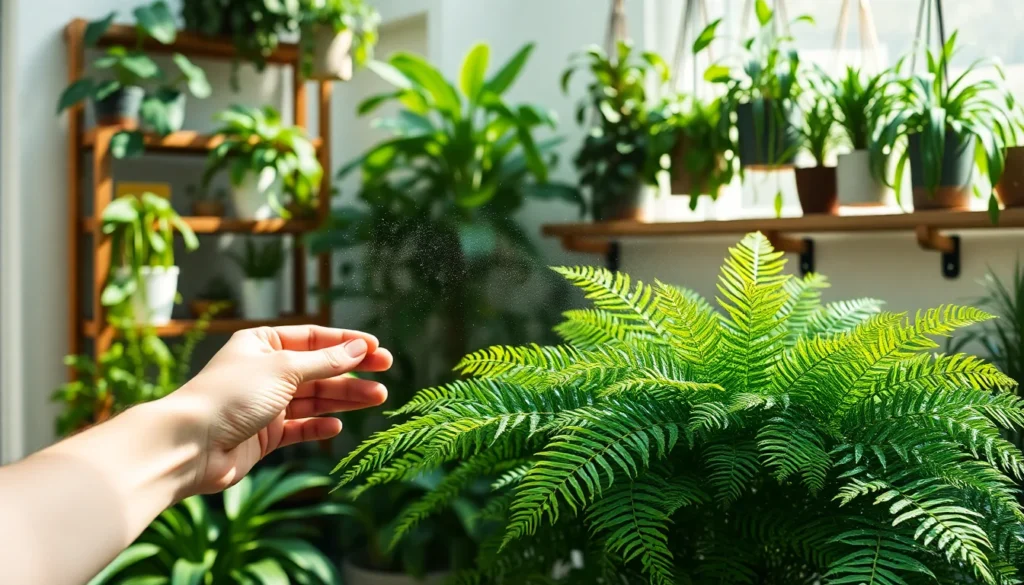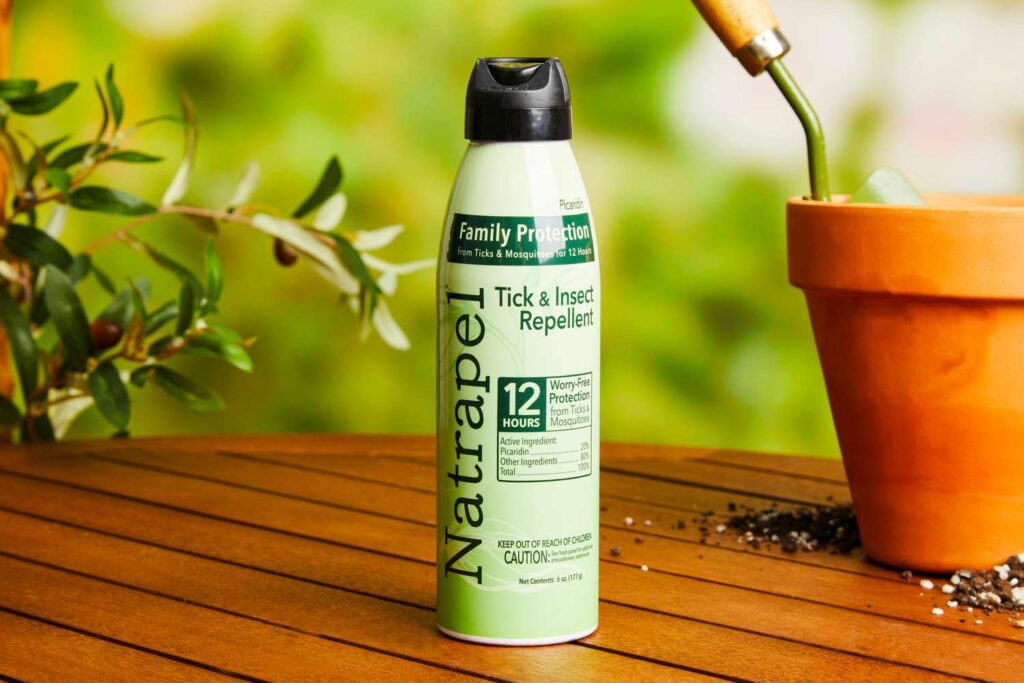The presence of bugs in the house can be frustrating, but you can naturally repel them with plants that keep bugs away indoors. In this guide, you’ll learn that Peppermint, Basil, Rosemary, Lemongrass, Citronella, and Lavender are among the plants that keep bugs away indoors. In addition, you’ll also learn how to use these plants effectively in your home for a bug-free environment.
Top 12 Indoor Plants That Keep Bugs Away

Here is a list of 12 plants that keep bugs away indoors. Your choice of the plant should coincide with the bugs you want to keep away:
1. Peppermint
- Bugs repelled: Ants, flies, mosquitoes, gnats
- Placement: Near windows, kitchen, entryways
- Tips: Crush a few leaves occasionally to release more scent
- Safety: Non-toxic to humans, but may irritate pets in large quantities
Peppermint is among the renowned indoor plants that keep bugs away. The plant is more than just a culinary herb; it’s a versatile insect repellent. Its strong menthol aroma keeps mosquitoes, ants, flies, and gnats away. Place peppermint in sunny windowsills or near doorways.
Crushing a few leaves occasionally releases their essential oils, enhancing their pest-repelling properties.
Beyond its practical use, peppermint can be incorporated into teas, desserts, and home remedies, making it both functional and decorative.
2. Basil
- Bugs repelled: Mosquitoes, flies
- Placement: Sunny spots in the kitchen or balcony
- Tips: Pinch leaves to release aroma, use fresh leaves in cooking for dual benefits
- Safety: Safe indoors, great for culinary use
Basil is a fragrant herb that repels mosquitoes and other flying insects. Its aromatic leaves contain compounds that insects dislike. Position basil near sunny windows or kitchen counters, and prune regularly to encourage new growth and maintain essential oil potency.
Fresh basil can also be used in cooking, adding an extra layer of usefulness to your indoor garden.
3. Citronella
- Bugs repelled: Mosquitoes, gnats
- Placement: Near doors, windows, or outdoor-adjacent indoor areas
- Tips: Trim regularly to encourage essential oil production
- Safety: Generally safe indoors
Citronella is renowned for its effectiveness in outdoor mosquito control, but it also adapts well to indoor use with proper care. Bright light and placement near entryways maximize its effectiveness.
Regular trimming promotes new growth and increases essential oil concentration. Indoor citronella not only deters mosquitoes but also adds a tropical touch to your home.
4. Lavender
- Bugs repelled: Moths, mosquitoes, flies
- Placement: Sunny, dry indoor areas
- Tips: Harvest flowers for extra scent, crush leaves occasionally
- Safety: Non-toxic, mild fragrance
Lavender is both beautiful and functional. Its calming floral scent repels moths, flies, and mosquitoes. Place lavender in sunny, well-drained spots indoors.
Occasional pruning and gentle crushing of stems help release aromatic oils. Its fragrance improves indoor air and creates a soothing environment while keeping pests away.
5. Rosemary
- Bugs repelled: Mosquitoes, flies
- Placement: Windowsills or sunny corners
- Tips: Use fresh sprigs to maximize scent
- Safety: Safe indoors
Rosemary produces a scent that deters mosquitoes and flies. Ideal placement includes windowsills or sunny corners. Crushing sprigs periodically releases aromatic oils. Beyond insect control, rosemary can be harvested for culinary use, making it both decorative and practical.
6. Lemongrass
- Bugs repelled: Mosquitoes, gnats
- Placement: Bright indoor areas or near entryways
- Tips: Crush leaves to release citronella oils
- Safety: Non-toxic
Lemongrass emits a citronella-like fragrance that mosquitoes and gnats avoid. It thrives in bright indoor locations near doors or windows. Occasionally, crush lemongrass leaves to release essential oil. Proper care ensures long-term effectiveness.
7. Catnip
- Bugs repelled: Mosquitoes, flies
- Placement: Sunny windows, shelves
- Tips: Occasional pruning keeps scent strong
- Safety: Attractive to cats, so place out of reach if necessary
Known for attracting cats, catnip also deters mosquitoes and flies. Place it near windows or shelves to disperse its aroma. Prune occasionally to maintain its potency.
8. Geraniums and Marigolds
- Bugs repelled: Mosquitoes, aphids
- Placement: Near windows, bright areas
- Tips: Deadhead flowers to encourage new blooms
- Safety: Non-toxic
Geraniums and marigolds repel mosquitoes, flies, and aphids. Position them near windows or areas prone to insects. Deadheading flowers encourages continuous blooms and enhances essential oil production, maximizing bug-repelling effects.
9. Eucalyptus, Sage, and Lemon Balm
- Bugs repelled: Mosquitoes, flies
- Placement: Small potted varieties indoors, near windows
- Tips: Crush leaves to release aroma
- Safety: Non-toxic in small indoor amounts
Eucalyptus, sage, and lemon balm close our list of indoor plants that keep bugs away. These three have unique insect-repelling properties.
Eucalyptus, for instance can reduce flies and mosquitoes, sage deters flies and moths, and lemon balm helps prevent gnats.
These plants add fragrance and texture to indoor spaces while contributing to a multi-layered pest management strategy.
But you may still ask,
Do Indoor Plants Really Keep Bugs Away?

Yes, certain indoor plants can help repel bugs naturally. These plants release essential oils that act as insect deterrents. While they aren’t a replacement for cleaning or pest control, when used strategically, they can significantly reduce bugs in your home.
Quick Answer: Yes! Many indoor plants keep bugs away by releasing natural insect-repelling oils. The most effective ones include peppermint, basil, lemongrass, lavender, rosemary, and citronella plants.
How Indoor Plants Naturally Repel Bugs
Plants repel bugs through a combination of aromatic oils, chemical compounds, and physical properties. Certain herbs and flowers produce scents that insects find unpleasant.
For example, peppermint emits a menthol-rich aroma that mosquitoes, flies, and gnats avoid. Similarly, citronella plants release essential oils that interfere with insects’ sensory systems, discouraging them from entering indoor spaces.
Beyond scent, some plants offer physical deterrents. Leaves that are hairy, waxy, or textured can make it difficult for insects to settle.
Healthy plants also improve indoor air circulation and humidity, which can reduce the environments where pests thrive. Combining aromatic properties with proper care and strategic placement makes indoor plants a powerful tool in natural pest control.
Here is a simple way to understand what we’ve covered in this section:
- Essential oils: Plants like citronella, peppermint, and eucalyptus release aromatic compounds that insects dislike.
- Physical barriers: Some plants have leaves that make it harder for insects to settle.
- Microclimate control: Healthy plants can improve air circulation, reducing stagnant, bug-friendly areas.
Why Choose Indoor Plants Over Chemical Sprays

There are several reasons to choose plants over chemical repellents:
Healthier Indoor Environment: Plants improve air quality, reduce harmful VOCs, and provide a natural fragrance.
Long-Term Solution: Unlike sprays, which work temporarily, well-maintained plants provide ongoing protection.
Sustainability: Using plants avoids toxic chemicals, benefiting both your family and the environment.
Aesthetic Value: In addition to their functional benefits, these plants enhance your home’s décor.
By integrating bug-repelling plants into your living spaces, you can achieve both beauty and functionality while keeping your indoor environment safe and healthy.
Pest-Specific Indoor Plant Strategies
- Mosquitoes: Use basil, citronella, peppermint, lavender, and lemongrass near entryways, windows, and corners.
- Roaches: Bay, mint, rosemary, catnip, and chrysanthemums are highly effective indoors.
- Ants: Peppermint and marigolds disrupt ant trails.
- Flies: Basil, lavender, rosemary, and eucalyptus reduce fly activity.
- Gnats: Lemon balm and lemongrass help prevent infestations.
Proper placement, plant health, and aromatic maintenance determine the effectiveness of these strategies. Combining multiple species creates layered protection against various pests.
Using Indoor Plants Effectively
To maximize benefits, plants should be strategically placed in areas where bugs enter or congregate. Crushing or pinching leaves releases essential oils. Combine species for a broader pest-repelling effect. Maintain healthy plants with proper watering, light, and soil conditions. Overwatering or poor care can attract pests instead of deterring them.
Expert Tips for a Pest-Free Home
- Minimize standing water to prevent mosquitoes.
- Keep plant saucers clean to avoid gnats.
- Rotate plants seasonally to maintain potency.
- Pair complementary plants to enhance protection.
- Maintain healthy, thriving plants for consistent effectiveness.
Conclusion
Indoor plants are a safe, natural, and effective way to keep bugs away while enhancing the beauty and aroma of your home.
Selecting the right species, maintaining plant health, and placing them strategically creates a living barrier against mosquitoes, ants, flies, roaches, and gnats.
This holistic approach not only provides pest control but also contributes to a healthier, more inviting indoor environment.
Frequently Asked Questions
Q1: Can indoor plants really keep mosquitoes away?
A: Yes, plants like basil, citronella, peppermint, lemongrass, and lavender release oils that mosquitoes avoid.
Q2: Can houseplants attract insects?
A: Unhealthy or overwatered plants may attract gnats, but healthy plants deter pests naturally.
Q3: Which plants repel roaches indoors?
A: Bay, mint, rosemary, catnip, and certain chrysanthemums are effective.
Q4: How should I place bug-repelling plants indoors?
A: Place them near windows, doors, and entry points. Combining multiple species ensures broader protection.
Q5: Can plants eliminate all insects indoors?
A: While they significantly reduce pests, combining plants with cleanliness ensures the best results.

